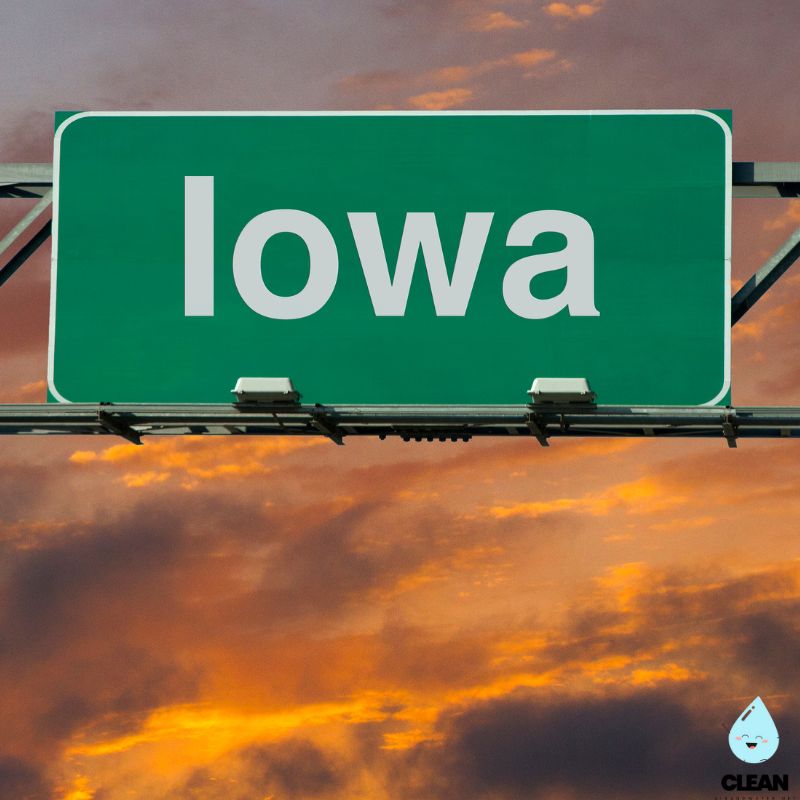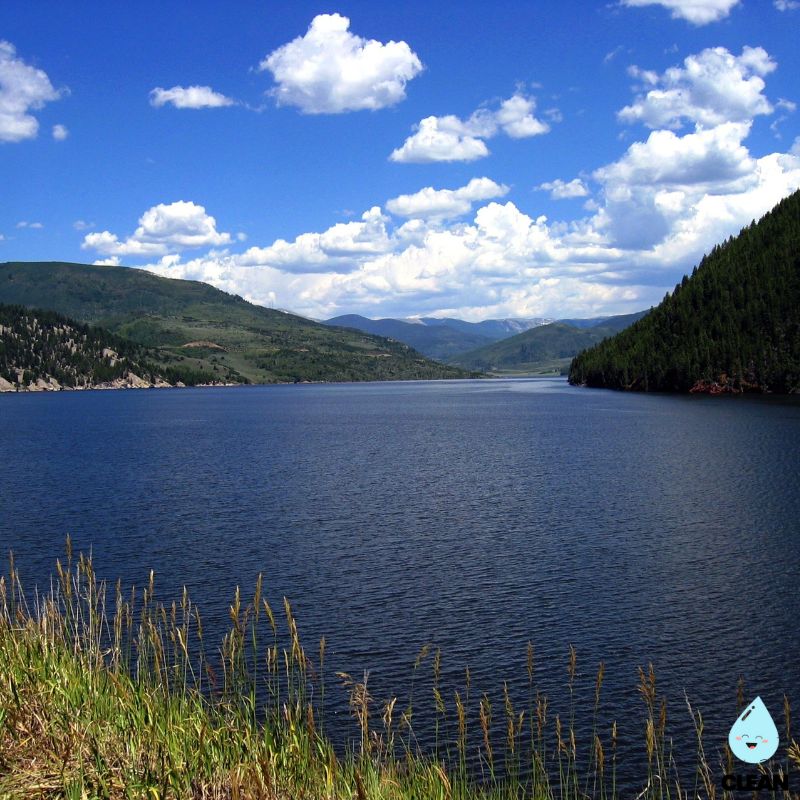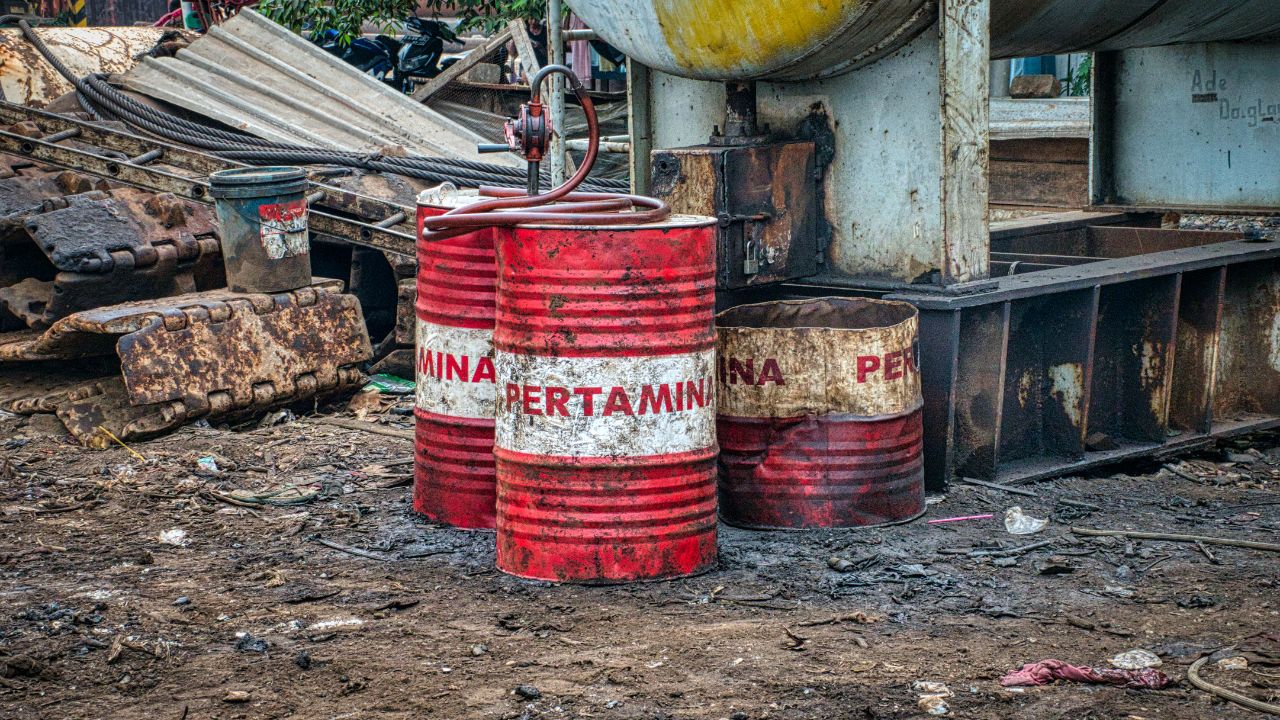Iowa Water Quality at a Glance
critical concerns
Is Iowa Water Safe to Drink?
Yes, But With Serious Concerns – Iowa water systems generally meet federal standards but face widespread agricultural pollution affecting 1.3 million residents with elevated nitrates. Current lawn watering bans in Des Moines area due to near-record nitrate levels. The state also has significant PFAS contamination, with 94% of surface water sources containing “forever chemicals” and 12 systems requiring treatment under new federal rules.
⚠️ Key Concerns for Iowa Residents
- Nitrate Contamination: 1.3 million served by systems with elevated nitrates; Des Moines/Raccoon Rivers at 15+ mg/L (50% above safety limits)
- Agricultural Runoff: 92% of nitrogen and 80% of phosphorus pollution from farm sources; 236 communities affected 2003-2017
- PFAS “Forever Chemicals”: 94% of surface water sources contaminated; 12 systems exceed new federal limits requiring treatment
- Disinfection Byproducts: Elevated chloroform and haloacetic acid levels from water treatment processes increasing cancer risk
Read the full report below for detailed analysis, city-specific data, and actionable recommendations for Iowa residents.
Iowa- The Hawkeye State – Water Quality Report 2025: PFAS Testing, Nitrate Crisis & Safety across your state
Iowa’s water infrastructure serves approximately 3.2 million residents across a predominantly agricultural landscape, with water systems ranging from large municipal utilities to small rural cooperatives. The state operates through a network of approximately 1,100 public water systems, with 92.3% of Iowans served by public water systems. Most of these systems are small, with 71% serving fewer than 500 people and nearly all connecting less than 3,300 residents. Iowa’s water sources include an extensive network of rivers, streams, and underground aquifers, with the Jordan Aquifer and Mt. Simon Aquifer providing deep groundwater sources for many communities.
According to the American Society of Civil Engineers’ 2023 Infrastructure Report Card, Iowa’s overall infrastructure received a C grade, with drinking water systems facing particular challenges from aging infrastructure and emerging contaminants. The state has received over $620 million in federal infrastructure investments from the Biden-Harris Administration’s Bipartisan Infrastructure Law to address these challenges, focusing on drinking water safety, PFAS treatment, and rural system upgrades. Iowa’s commitment to water quality improvement is demonstrated through partnerships between the Iowa Department of Natural Resources (DNR), local utilities, and federal agencies working to ensure safe, reliable water access while addressing the unique challenges facing agricultural communities and critical nitrate contamination concerns.

Iowa Water Quality: Current Status (2024-2025)
Statewide Compliance and Testing
- Overall Compliance: The majority of Iowa’s 1,100+ public water systems meet federal Safe Drinking Water Act standards, though the state faces significant challenges with nitrate contamination affecting 1.3 million residents through 236 communities with elevated levels.
- PFAS Monitoring: Iowa has conducted comprehensive PFAS testing across 116 drinking water supplies representing approximately 46% of the state’s population, with 94% of surface water sources showing PFAS contamination compared to 30% of groundwater sources.
- Infrastructure Investment: Over $620 million in federal funding through the Bipartisan Infrastructure Law has been allocated to Iowa for water infrastructure improvements, including specific funding for emerging contaminants and lead service line replacement.
Current Water Quality Emergency
- Nitrate Crisis: Central Iowa Water Works serving 600,000 residents has implemented unprecedented lawn watering bans due to nitrate levels reaching 15+ mg/L in Des Moines and Raccoon Rivers, 50% above federal safety limits.
- Agricultural Impact: Iowa’s extensive agricultural landscape contributes 92% of nitrogen and 80% of phosphorus pollution, with nitrate contamination worsening in 126 water systems serving 551,000 people between 2003-2017.
- Treatment Capacity: The Des Moines nitrate removal facility has operated for over 70 days in 2025, costing $624,690 annually, with systems running at full capacity to meet federal drinking water standards.
PFAS “Forever Chemicals” Contamination
- Widespread Surface Water Contamination: 94% of Iowa’s surface water sources test positive for PFAS, with contaminated groundwater averaging 43.9 ng/L compared to 9.8 ng/L in surface water sources.
- Federal Compliance Requirements: At least 12 Iowa water systems exceed new EPA PFAS limits and must implement treatment by 2029, with PFOA and PFOS limits set at 4 parts per trillion.
- Research and Innovation: The University of Iowa hosted the 2025 Iowa PFAS Conference, bringing together researchers, regulators, and utilities to develop innovative approaches to PFAS testing and treatment in Iowa’s unique water environment.
Rural and Small System Challenges
- Infrastructure Disparities: Small rural water systems face disproportionate challenges with limited technical capacity and higher per-capita costs, as 71% of Iowa’s public water systems serve fewer than 500 people.
- Targeted Federal Support: Dedicated funding streams through the Emerging Contaminant and disadvantaged community programs provide grants and forgivable loans to ensure equitable access to safe drinking water in rural Iowa.
- Asset Management: Few utilities are reinvesting in underground infrastructure at the recommended rate of 1% to 3% of system value, with many municipal systems reporting distribution infrastructure beyond expected usable life.
Looking Forward: 2025-2030
Iowa’s water quality landscape faces unprecedented challenges as utilities address current nitrate emergencies while preparing for new federal PFAS regulations taking effect in 2029. The state’s ongoing nitrate crisis, exemplified by the Des Moines area lawn watering ban, highlights the urgent need for agricultural pollution controls. Combined with substantial federal infrastructure investments exceeding $620 million, Iowa must simultaneously manage legacy agricultural impacts, emerging PFAS contamination found in 94% of surface water sources, and the economic challenges facing small rural systems. Success will require continued collaboration between the Iowa DNR, agricultural communities, and water utilities to ensure that all Iowans have access to safe, affordable drinking water while addressing both immediate nitrate threats and long-term PFAS contamination.
Recommendations for Iowa Residents

Know Your Water Source
Contact your water utility to request annual water quality reports and ask about PFAS testing results. Visit the Iowa DNR’s Safe Drinking Water Information System to access your local system’s testing data and understand any contaminants of concern in your area. Pay special attention to nitrate levels if you’re in agricultural areas.

Support Infrastructure Investment
Stay informed about local water infrastructure needs and support utility rate structures that enable necessary improvements. Attend public meetings when utilities discuss infrastructure upgrades, nitrate removal systems, and PFAS treatment investments.

Consider Multi-Contaminant Filtration
For areas with known PFAS contamination and agricultural impacts, consider NSF-certified activated carbon or reverse osmosis filters specifically tested for PFAS removal and nitrate reduction. These can provide additional protection while utilities implement treatment upgrades.

Report Water Quality Concerns
Contact your local water utility immediately for taste, odor, or color concerns. Report suspected contamination to the Iowa DNR Environmental Services at (515) 725-8200 for investigation and follow-up. In Des Moines area, monitor Central Iowa Water Works updates on nitrate levels.

Practice Water Conservation
Support Iowa’s water sustainability by implementing conservation measures like efficient irrigation, rainwater harvesting, and low-flow fixtures. In areas with nitrate concerns, follow watering restrictions to help utilities maintain treatment capacity and system reliability.
Iowa Cities We Cover
Des Moines Water Quality
Comprehensive analysis of Central Iowa Water Works, serving over 600,000 central Iowans. Includes current nitrate crisis management, ongoing lawn watering restrictions, treatment processes, infrastructure modernization, and proactive PFAS monitoring results.
Frequently Asked Questions
Is Iowa’s tap water safe to drink?
Most of Iowa’s public water systems meet federal drinking water standards and are generally safe for consumption, though the state faces significant challenges with nitrate contamination affecting 1.3 million residents through 236 communities.
However, PFAS contamination is widespread in Iowa’s surface water sources, with 94% of surface water supplies testing positive for these chemicals. The Iowa Department of Natural Resources has conducted extensive testing across 116 water supplies representing nearly half the state’s population. Current emergency conditions in the Des Moines area, where lawn watering bans are in effect due to nitrate levels exceeding 15 mg/L, highlight ongoing challenges. While utilities work to meet drinking water standards, residents should review their utility’s annual water quality report and stay informed about local conditions.
Why does Iowa have such severe nitrate problems?
Iowa’s intensive agricultural landscape contributes 92% of nitrogen pollution to waterways, with fertilizer and manure runoff creating widespread contamination affecting 1.3 million residents.
The state’s flat terrain and extensive tile drainage systems transport nitrates directly from agricultural fields into rivers and groundwater. Spring rains following drought conditions, like those experienced in 2024-2025, can cause massive nutrient leaching events. The Des Moines and Raccoon Rivers currently show nitrate levels of 15+ mg/L, 50% above the federal safety limit of 10 mg/L. This has forced Central Iowa Water Works to operate their costly nitrate removal facility for over 70 days in 2025, leading to unprecedented lawn watering bans to maintain treatment capacity.
How can I find out about my local water quality in Iowa?
Iowa residents can access comprehensive water quality information through several resources:
• Annual Water Quality Reports: Contact your water utility directly for their Consumer Confidence Report, which details all testing results and any violations or concerns
• Iowa DNR SDWIS: Visit the Iowa Department of Natural Resources’ Safe Drinking Water Information System online database to access testing results and compliance information for your local water system
• PFAS Testing Data: The Iowa DNR maintains comprehensive PFAS testing results and makes data publicly available through their monitoring programs
• EWG Tap Water Database: Use your zip code to search for contaminants detected in your local water system and get filter recommendations
• Current Emergencies: In Des Moines area, monitor Central Iowa Water Works daily updates on nitrate levels and watering restrictions
What challenges do Iowa’s small water systems face?
Iowa’s predominantly rural character creates unique water infrastructure challenges:
System Size: 71% of Iowa’s public water systems serve fewer than 500 people, making compliance with new regulations like PFAS treatment economically challenging, especially with at least 12 systems requiring treatment by 2029
Technical Capacity: Small systems often lack the technical expertise and financial resources to implement complex treatment technologies required for both nitrate removal and emerging PFAS contaminants
Infrastructure Age: Many municipal systems report distribution infrastructure beyond expected usable life, with few utilities reinvesting at recommended rates of 1-3% of system value annually
Federal Support: The Bipartisan Infrastructure Law provides over $620 million to Iowa specifically to help smaller systems address these challenges through grants and low-interest loans
Quality News About Your Water
Get the comprehensive water quality news coverage you need with our dedicated US Water News Service. From coast to coast, we deliver in-depth reporting and expert analysis on PFAS contamination, EPA regulatory changes, infrastructure developments, and emerging water safety issues affecting communities nationwide. While mainstream media only covers the biggest stories, we provide the detailed, ongoing coverage that helps you understand the full scope of America’s water challenges. Whether you’re a concerned citizen, water professional, or community leader, our daily updates and analytical insights keep you informed about the issues that matter most to public health and environmental safety.
Contaminants of Concern

PFAS “Forever Chemicals”
Source: Agricultural runoff, industrial discharge, landfill leachate, sewage sludge application to farmland, and historical use of firefighting foam at airports and military installations
Health Effects: Linked to kidney and testicular cancer, liver damage, immune system suppression, high cholesterol, and developmental effects in children
Current Status: 94% of Iowa’s surface water sources test positive for PFAS, with contaminated groundwater averaging 43.9 ng/L compared to 9.8 ng/L in surface water. At least 12 systems must comply with new EPA limits by 2029 EPA Limits: 4 ppt for PFOA and PFOS individually, with hazard index for other PFAS compounds

Nitrate Contamination
Source: Agricultural fertilizer and manure runoff, with 92% of nitrogen pollution coming from farm sources transported through Iowa’s extensive tile drainage system
Health Effects: Causes methemoglobinemia (blue baby syndrome) in infants, linked to colorectal cancer, thyroid disease, and neural tube birth defects at levels above 5 mg/L
Current Status: 1.3 million Iowans served by systems with elevated nitrates; Des Moines/Raccoon Rivers at 15+ mg/L (50% above safety limits); unprecedented lawn watering bans in Des Moines area Federal Limit: 10 mg/L, with health concerns documented at 5 mg/L
Please read – our information
The information presented on cleanairandwater.net is compiled from official water quality reports, trusted news sources, government websites, and public health resources. While we strive for accuracy and thoroughness in our presentations, we are not scientists, engineers, or qualified water quality professionals.
Our mission is to present water quality information in an accessible, real-world format that helps people understand what’s in their water and make informed decisions about their health and safety. We believe that complex environmental information should be available to everyone in a format that’s easy to understand.
We make every effort to ensure our content is current and accurate, but we cannot guarantee that all information is complete or error-free. This website should not replace official communications from your local water utility or health department. We always recommend consulting official sources for the most up-to-date information regarding your specific water system.
Clean Air and Water is not liable for any unintentional errors, omissions, or outdated information. The content on this site is provided for informational purposes only and should not be considered professional advice.


